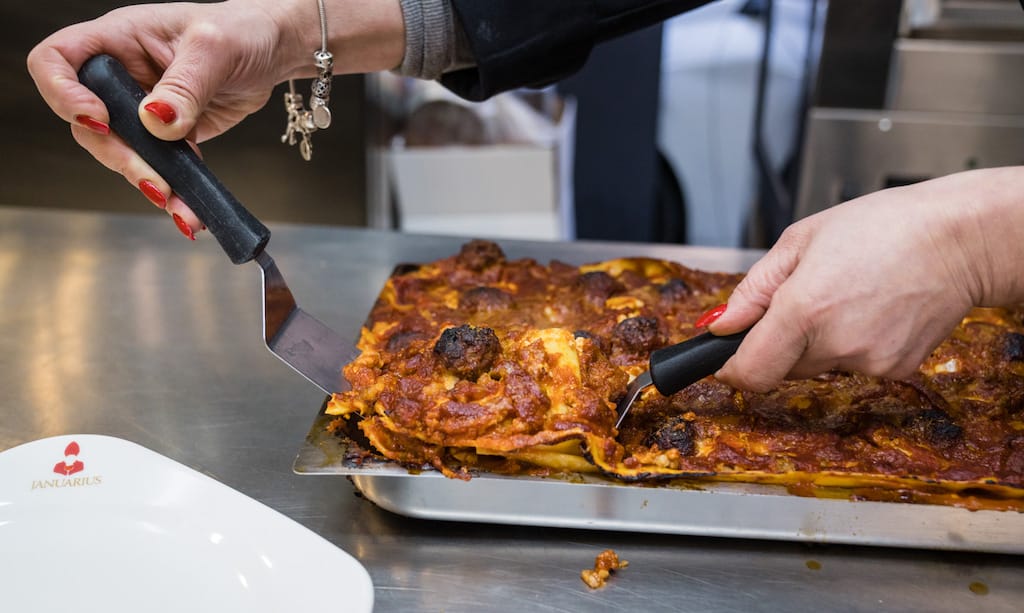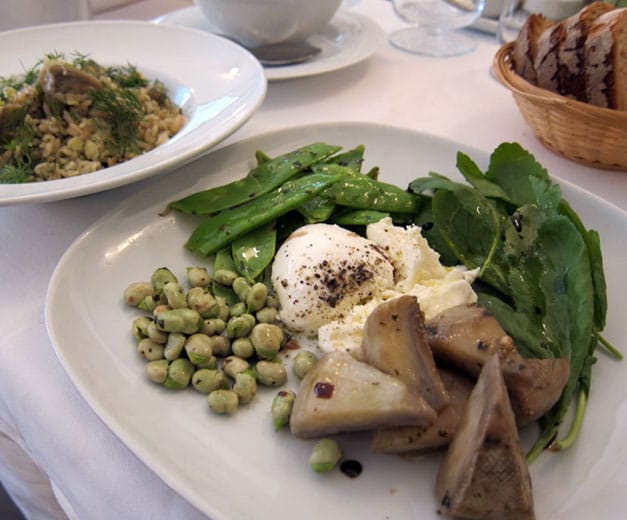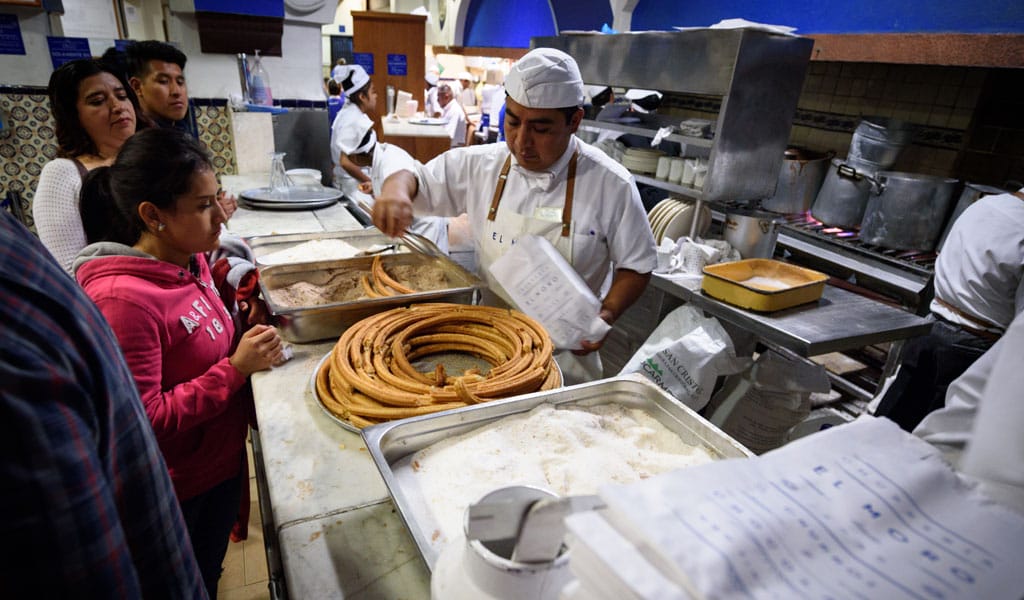Long before Halloween – nowadays a popular event marked by pumpkins and costumes here in Italy, too – arrived in Naples, we had Carnival. A mix of pagan and religious festivity, celebrated with exuberance and (mainly culinary) excess before Lent, it culminates with Mardi Gras, the Tuesday in February which falls six weeks before Easter. In Naples, Carnival used to imply embarrassing homemade costumes and the desperate effort to escape egg throwing in the streets on the way home from school – as well as much more pleasant rites, including the food-related ones. Which, luckily, still endure.
The widespread Italian habit of frying food for Carnival here takes the irregular, indented shape of chiacchiere – thin, crunchy fritters sprinkled with powdered sugar, which are also common in other regions of Italy but with different names – traditionally served with sanguinaccio, a decadent chocolate sauce originally made with pork’s blood, to honor the animal’s sacrifice. But a lesser-known local tradition exists which truly demonstrates the city’s opulent soul and its deep bond to gastronomic rituals and their abidance: Neapolitan lasagna. It’s a dish which, unlike other local specialties such as pastiera or casatiello, remains tied solely to this time of the year and its debauchery.
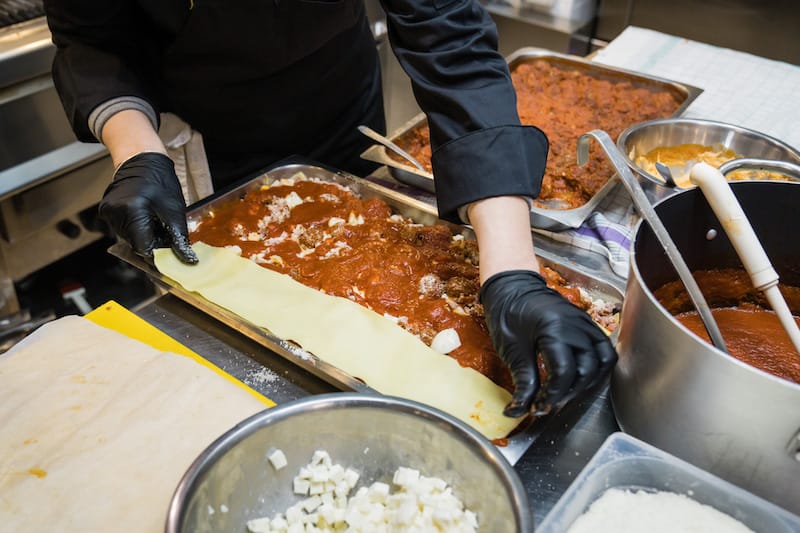
As the name suggests, we are talking about something strictly Neapolitan – not the rich, multilayered pasta dish with origins in Emilia Romagna, so broadly identified as one of Italy’s national culinary emblems. This local version is similar, yet something all its own: forget béchamel sauce and ground meat-based Bolognese sauce; in Neapolitan lasagna, they are replaced by ricotta, sausages and patiently made micro-meatballs (fried, inescapably). Both recipes date back to the Middle Ages, sharing a common origin in the Ancient Rome’s culinary heritage: as a few historical sources attest, including a recipe books from the Angevin Court dating back to 1238, the Neapolitan lasagna slightly predates the northern one, whose first traces are to be found in records from 1282.

Yet, none of these predecessors matches the current recipes, as during that period, a fundamental ingredient had yet to be introduced to Italian kitchens: tomato. The present Neapolitan version probably originated in the 19th century’s noble mansions as a declaration of abundance, perfectly embodying the Carnival spirit. The first official mention is in a cookbook published in 1881 (Il principe dei cuochi o la vera cucina napolitana, “The prince of cooks or the authentic Neapolitan cuisine,” by Francesco Palma), while Francis II of the Two Sicilies, reigning until 1861, was nicknamed “King Lasagna” out of his fondness for the dish. Since then, the recipe knew only a few minor variations, including the use of fior di latte or even buffalo mozzarella instead of smoked provola (to the utter disdain of lasagna purists), and Parmesan instead of Pecorino cheese (only slightly less disapproved).
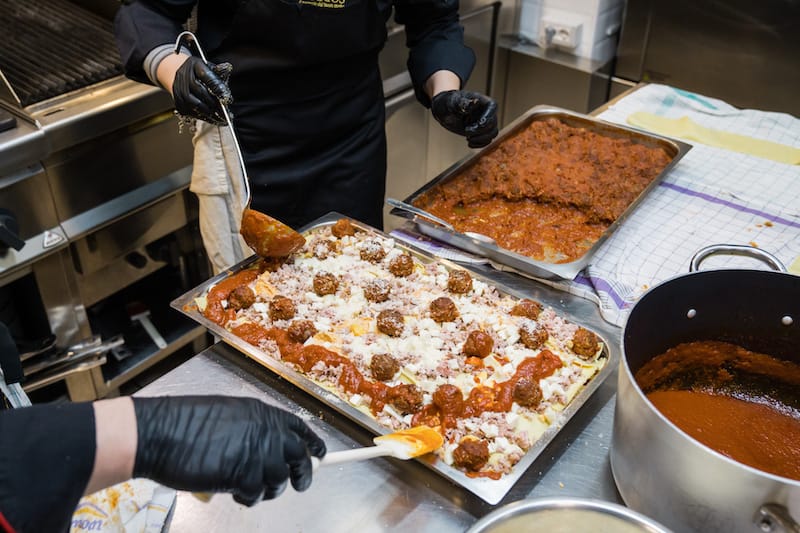
Thus, to this day during Carnival season, Neapolitan lasagna is prepared in homes across the city, respecting the traditions – with the inevitable, subtle differences handed down from one generation to another – and in some restaurants daring to assemble the filling stratification of pasta, sauce, ricotta, meat and more, summing enough calories and satisfaction to make a complete meal.
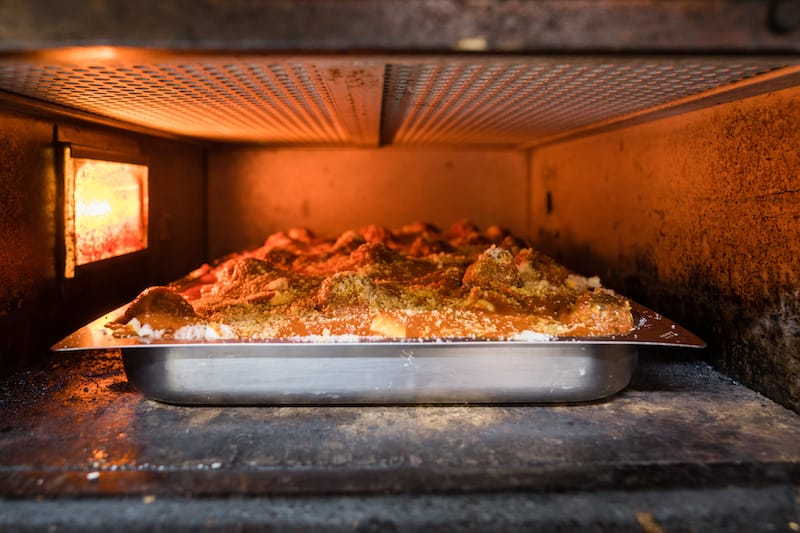
Amongst them is Januarius, which proudly calls itself not only a “Neapolitan” but a “Meridionalist” restaurant, devoted to safeguarding and divulging the local heritage at its best. Nevertheless, owner Francesco Andoli – both a restaurateur and a journalist – opted for a conciliatory solution. “I decided to apply to this recipe my broader approach to life,” Francesco says. “I go totally traditional for the filling, sticking to my family recipe: ricotta cheese, smoked provola, fried meatballs, ragù sauce, yet a bit lighter compared to the intense, long-cooked classic of the Sunday lunch, as this one is made with cervellatine, as we call the long and slender pork sausages, instead of spareribs and other fattier meats. And, we also add thinly sliced salami and sliced hard-boiled eggs. Some people leave them out, but to me, they are essential. The trick is in carefully balancing the right amount of each ingredient, for a pleasant and enjoyable result.”
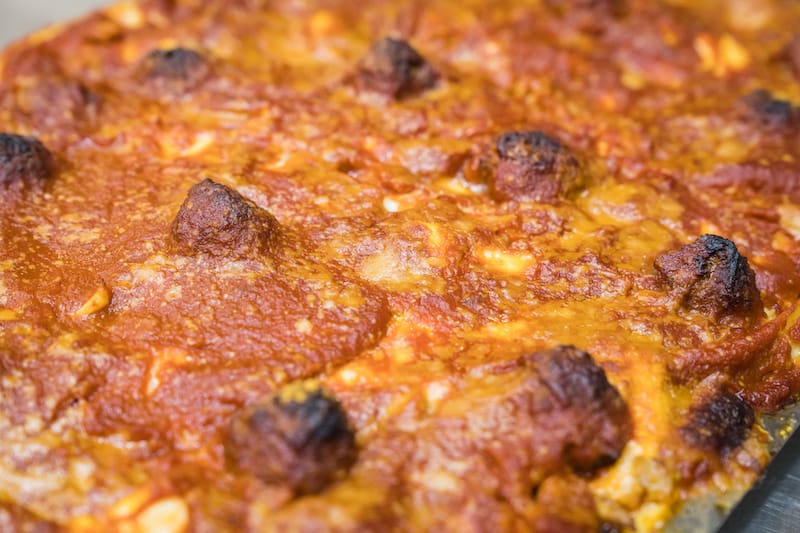
The well-acknowledged food writer Jeanne Carola Francesconi ascribes the latter two additions to the culinary heritage of Pozzuoli, the seaside village close to the city. And while the filling sounds anything but light, Andoli’s compromise relates to the pasta, instead. Neapolitan tradition commands to use durum wheat semolina pasta layers, boiled and drained, with their rough and porous surface and the wavy borders ready to scorch as the lasagna cooks in the oven. “I prefer fresh egg pasta, instead, thinly and carefully stretched: I found its texture lighter and gentler, giving an overall more enjoyable result,” he says. “This is my attempt to pacify the diatribe between Neapolitan and Bolognese tradition. As a journalist, I have to recognize they were smarter than us to promote their recipe and let it to be known all around the world. And I’m particularly fond of making tourists, both foreigners and Italians, aware of our version.”

The choice of egg pasta, shared by many chefs and home cooks, also has practical implications and turns out to be a winner especially when the lasagna – as the local habit goes – is served “riposata:” “This is a perfect recipe to be made in generous amount and consumed for a few days in a row,” explains Andoli. “Actually, it’s even tastier when eaten the day after, as we do at the restaurant: thus, all the ingredients merge in the ideal way and the lasagna itself dries out, getting more compact.”
The only flaw of Neapolitan lasagna, namely Januarius’s version? You have to wait for the single week of the year when Mardi Gras falls to enjoy it. “I’m deeply respectful of culinary timelines,” Andoli says. “I like marking the rhythm of the annual events with seasonal, traditional recipes. I don’t want lasagna to become a ubiquitous touristic dish, like carbonara in Rome.”
This article was originally published on February 20, 2023.
 April 16, 2014 Spring (Food) Break 2014
April 16, 2014 Spring (Food) Break 2014
Update: Kantin is sadly no longer open
With all of the anticipation of local […] Posted in Istanbul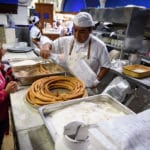 March 30, 2017 El Moro
March 30, 2017 El Moro
Nowhere in Mexico City does one feel the collective weight of the largest population in […] Posted in Mexico City March 9, 2015 Mama Roux
March 9, 2015 Mama Roux
In Athens, apart from traditional or nouvelle Greek, you can find almost any kind of […] Posted in Athens
Luciana SquadrilliGianni Cipriano and Sara Smarrazzo
Published on February 05, 2024
Related stories
April 16, 2014
IstanbulUpdate: Kantin is sadly no longer open With all of the anticipation of local elections in March, the scandalous graft-laden tapes leaked via social media, the communication fog brought on by the ban of Twitter and YouTube and the subsequent call for a vote recount in many cities, this city's stomach had good reason to…
March 30, 2017
Mexico City | By J. Alejandro
Mexico CityNowhere in Mexico City does one feel the collective weight of the largest population in North America more than on Avenida Lazaro Cardenas, the traffic artery that gushes a surfeit of humans and cars up the heart of the city’s downtown. The gutters stink of rotting fruit. Dirt and littered garbage encrust the sidewalks. And,…
March 9, 2015
AthensIn Athens, apart from traditional or nouvelle Greek, you can find almost any kind of cuisine you crave, but usually not under one roof. Thanks to the influx of immigrants and diaspora Greeks in the past 20 years, the city’s roster of foreign restaurants is no longer confined to Italian, French and a sprinkling of…







































